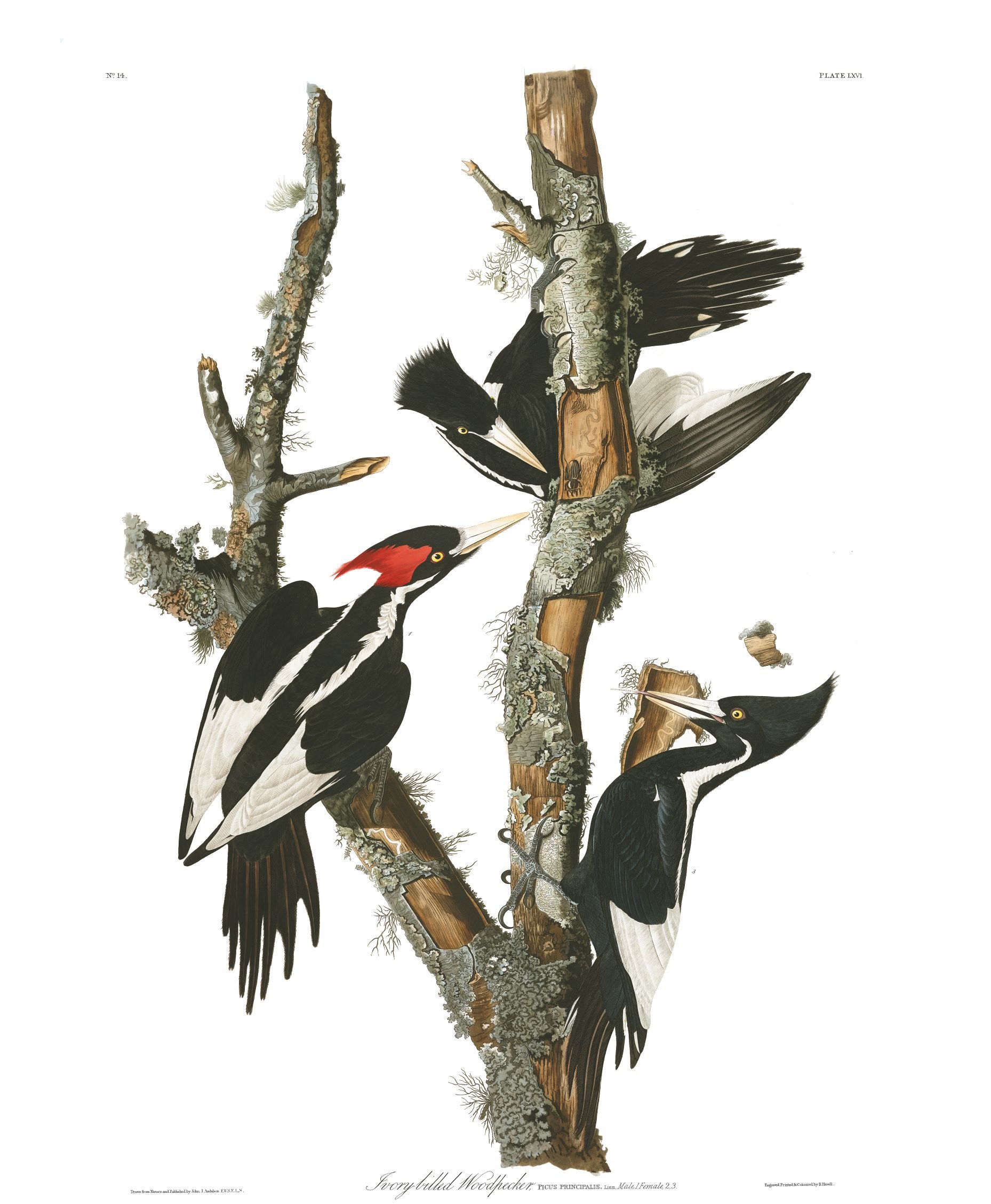Photo: Ivory-billed Woodpecker plate, J.J. Audubon
Tom Blackburn
Practically everyone has heard that the U.S. Fish and Wildlife Service declared the Ivory-billed Woodpecker officially extinct. Now, like the Passenger Pigeons that used to number in the hundreds of millions, the only way you’ll be able to see an Ivory-billed Woodpecker is in a museum. Is there an extinction crisis? What can you do about it?
Ivory-billed Woodpecker plate, J.J. Audubon
Two years ago, a Science Magazine article noted that over the last 50 years, the North American bird population has declined by nearly three billion birds – a reduction of nearly 30%. A few months later, National Audubon Society reported in Survival by Degrees that global temperature rise is placing two-thirds of North American bird species at an increasing risk of extinction. Birds are not alone in experiencing sharp declines. A German study documented a 75% reduction in flying insect biomass in nature protection areas in just 27 years. A United Nations report stated that nearly one million plant and animal species are at risk of extinction.
The largest cause of extinctions is habitat loss. What can you do about this? Noted author and entomologist Doug Tallamy has a radically simple idea: a Homegrown National Park. Tallamy’s vision is to convert half of America’s lawns – 20 million acres, 9 times larger than Yellowstone National Park – to native plants that can sustain wildlife, restore biodiversity and help the ecosystem. ASNV’s Audubon at Home program can help you decide what native plants are best for your yard.
Another simple action you can take that protects birds especially is to keep your cat indoors. Outdoor cats are second only to habitat loss as a contributor to human-caused bird mortality. ASNV is doing its part by participating in a mediation program under the auspices of the Virginia General Assembly that hopefully will result in legislation that will address the problems caused by the more than 100 million unowned cats in the United States. You can find more ways to help protect birds at The Cornell Lab of Ornithology.
You can also get involved in organizations that work to protect and restore the environment. ASNV’s advocacy, conservation, education, and citizen science initiatives are all focused on achieving our vision of a Northern Virginia in which people, wildlife, and their habitats thrive. You can find links to dozens of other Virginia environmental organizations here.
The extinction crisis is real, and we humans have caused it. It’s up to us to also be part of the solution.


